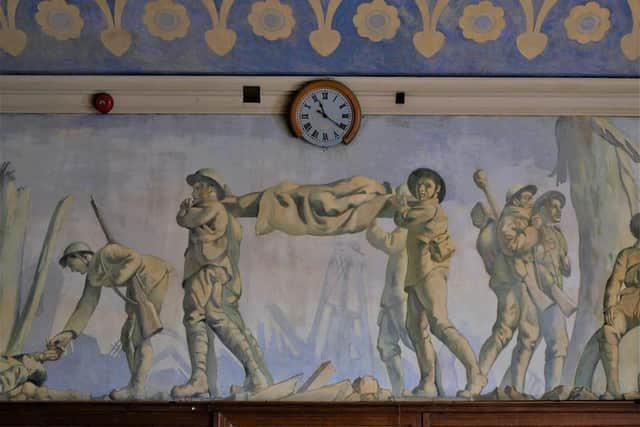Victory Hall in Balcombe, West Sussex listed to mark Remembrance weekend
and live on Freeview channel 276
Ahead of Armistice Day and Remembrance Sunday (Saturday 11 and Sunday 12 November 2023), Victory Hall in Balcombe, West Sussex has been listed at Grade II by the Department for Culture, Media and Sport, on the advice of Historic England.
Built in the aftermath of the First World War (1914-1918), the memorial is among tens of thousands that were erected across England in memory of the many people who lost their lives in the conflict. In place of graves, these memorials became focal points for local communities to mourn and honour their dead.
Advertisement
Hide AdAdvertisement
Hide AdArts and Heritage Minister Lord Parkinson of Whitley Bay said: "The long roll of honour inscribed on memorials across the land are a powerful and poignant reminder of the huge sacrifices made by so many families during the two World Wars.


“Each year, we recommit ourselves to ensuring that the names of those who laid down their lives in our defence will never be forgotten. I am glad that these memorials are being listed so that the names they proudly bear will live for evermore.”
Victory Hall in Balcombe wasbuilt as a working men’s institute in around 1901 and was later remodelled as a memorial village hall and social club in 1923. Inside the main hall there are large murals depicting scenes of War and Peace designed by the artist Neville Lynton.
Lynton joined the Royal Sussex Regiment at the start of the First World War, where he reached the rank of major and saw military action at the Somme and Amiens. He later became a war correspondent. During the conflict, Lynton sketched scenes of soldiers in the trenches.
Advertisement
Hide AdAdvertisement
Hide AdThe hall in Balcombe was founded by Lady Denman, a prominent national figure who helped found the National Federation of Women’s Institutes in 1916, and who worked closely with the architect John Bond in the building’s design. She was also the head of the women’s branch of the Ministry of Agriculture and served as Director of the Women's Land Army which she helped to re-establish during the Second World War.
Directly opposite the entrance door is a Roll of Honour with a dedication reading ‘THIS HALL WAS BUILT IN MEMORY OF THE BALCOMBE MEN WHO SERVED IN THE GREAT WAR 1914-1918’. Below are three panels with the names of those who served in the First World War.
The Missing Pieces Project: Uncover hidden histories and highlight overlooked stories
We’d love you to add your story, photos and information to listed local war memorials. Perhaps someone who fought in the First or Second World War lived in your street, attended your school, got married in your local church or supported the same football team? Maybe a member of your family is remembered on your local war memorial?
Advertisement
Hide AdAdvertisement
Hide AdEverything you add is an important piece of the picture. And the more pieces of the picture we have, the better we can remember and protect what makes these war memorials so special.
Looking after your local war memorial
War memorials are important landmarks for communities, standing as a testament to local people who made the ultimate sacrifice in war and conflict. To help local communities take care of their war memorials we’ve just released new guidance which can be found at Help Look After War Memorials.